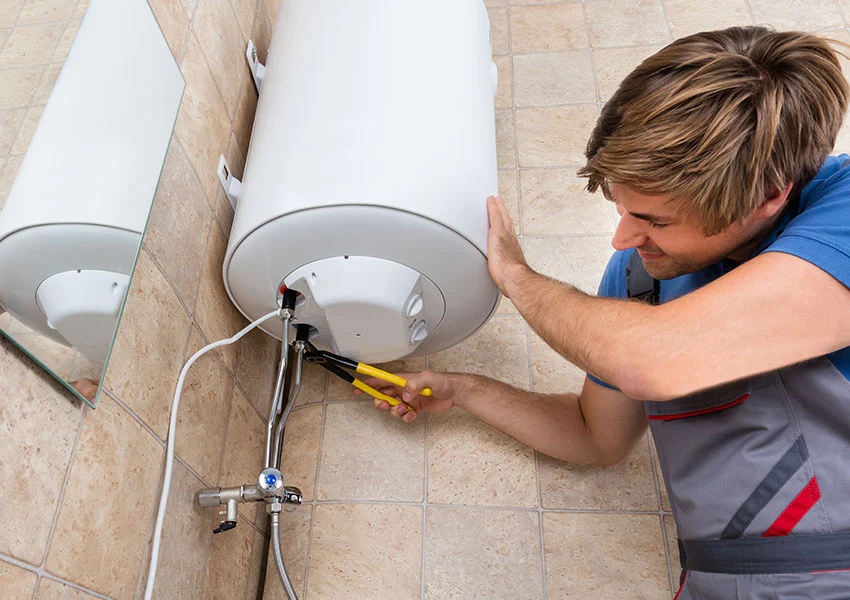Ways to Extend the Life of Your Home's Hot Water System Through Maintenance
Ways to Extend the Life of Your Home's Hot Water System Through Maintenance
Blog Article
Are you currently interested in critical info around Tips on Maintaining a Water Heater?
:max_bytes(150000):strip_icc()/reasons-gas-water-heater-not-working-5212987-hero-fe6b82a59053421c88b7d13ea311d3c5.jpg)
Hot water is necessary for everyday convenience, whether it's for a revitalizing shower or cleaning meals. To ensure your hot water system runs successfully and lasts longer, regular upkeep is essential. This article gives useful pointers and insights on just how to preserve your home's warm water system to avoid disturbances and costly repair services.
Intro
Maintaining your home's hot water system may seem complicated, but with a few easy steps, you can ensure it operates smoothly for several years to find. This guide covers whatever from comprehending your warm water system to DIY maintenance pointers and recognizing when to hire professional assistance.
Relevance of Keeping Your Hot Water System
Normal upkeep not just prolongs the lifespan of your hot water system yet additionally guarantees it runs successfully. Neglecting upkeep can cause reduced efficiency, greater energy costs, and even premature failure of the system.
Indicators Your Hot Water System Needs Upkeep
Understanding when your warm water system needs focus can avoid major problems. Watch out for signs such as irregular water temperature, odd noises from the heating unit, or corroded water.
Recognizing Your Warm Water System
Prior to diving into maintenance tasks, it's useful to comprehend the fundamental parts of your hot water system. Normally, this consists of the hot water heater itself, pipelines, anode rods, and temperature controls.
Monthly Maintenance Tasks
Regular monthly checks can help catch minor concerns prior to they rise.
Purging the Hot Water Heater
Flushing your water heater gets rid of sediment accumulation, boosting performance and prolonging its life.
Checking and Changing Anode Rods
Anode poles stop rust inside the tank. Inspecting and changing them when broken is important.
Checking and Changing Temperature Settings
Changing the temperature settings makes sure ideal efficiency and security.
DIY Tips for Maintenance
You can do several maintenance jobs yourself to maintain your warm water system in top condition.
Looking for Leakages
Regularly examine pipelines and links for leakages, as these can lead to water damage and higher expenses.
Examining Stress Relief Valves
Testing the pressure safety valve guarantees it functions properly and prevents too much stress accumulation.
Insulating Pipes
Shielding warm water pipes decreases heat loss and can save energy.
When to Call a Specialist
While do it yourself upkeep is beneficial, some concerns call for expert knowledge.
Facility Issues Needing Professional Assistance
Instances consist of significant leakages, electric issues, or if your water heater is regularly underperforming.
Regular Professional Upkeep Advantages
Specialist maintenance can consist of extensive inspections, tune-ups, and making sure compliance with security criteria.
Conclusion
Routine upkeep of your home's warm water system is essential for effectiveness, longevity, and expense savings. By complying with these tips and recognizing when to look for professional help, you can make certain a reliable supply of warm water without unanticipated disturbances.
How to Maintain an Instant Hot Water Heater
Before tinkering with your hot water heater, make sure that it’s not powered on. You also have to turn off the main circuit breaker and shut off the main gas line to prevent accidents. Also turn off the water valves connected to your unit to prevent water from flowing into and out of the appliance. 2. When you’re done, you have to detach the purge valves’ caps. These look like the letter “T†and are situated on either side of the water valves. Doing so will release any pressure that has accumulated inside the valves while at the same time avoid hot water from shooting out and burning your skin. 3. When the purge valves’ caps are removed, you have to connect your hosing lines to the valves. Your unit should have come with three hoses but if it didn’t, you can purchase these things from any hardware or home repair shops. You can also get them from retail stores that sell water heating systems. Read the user’s manual and follow it to complete this task properly. When the hosing lines are connected, open the purge port’s valves. 4. You should never use harsh chemical cleaners or solutions when cleaning your unit. Make use of white vinegar instead. It should be undiluted and you’ll probably use about 2 gallons. 5. Now flush your water heater. This task should probably take about 40 minutes. We can’t give you specific directions for this because the procedure is carried out depending on the type, model and brand of your heater. With that being said, refer to the user’s manual. 6. When you’re done draining the unit, you have to turn off the purge port valves again. Remove the hosing lines that you earlier installed on each of the water valves. Put the valve caps (purge port) back in their respective places and be very careful so as not to damage the rubber discs that are found inside these caps. 7. Now that everything’s back in place, check your user’s manual again to find out how to reactivate your water heating system. 8. Once it is working, turn one of your hot water faucets on just to let air pass through the heater’s water supply pipes. Leave the tap on until water flows smoothly out of it. https://www.orrplumbing.com/blog/2014/september/how-to-maintain-an-instant-hot-water-heater/

As a passionate reader on Water Heater Maintenance Tips You Can't Afford to Forget, I thought sharing that short article was a good thing. Sharing is nice. Helping people is fun. Many thanks for being here. Kindly pay a visit to our website back soon.
Contact Us Now Report this page